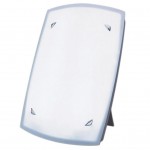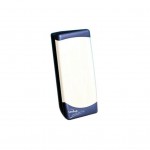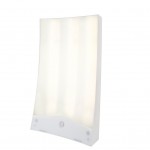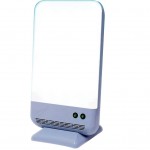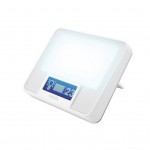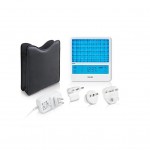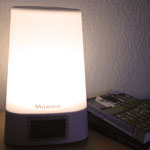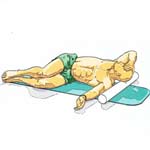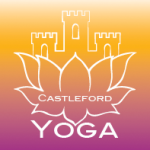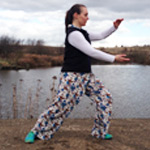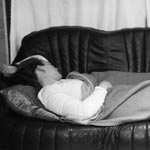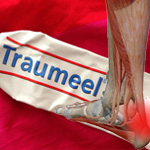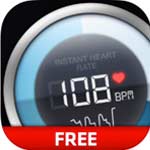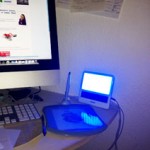 Following on from my last post on SAD (seasonal affective disorder) self-help, looking at how to utilise light therapy as a method for dealing with winter depression, here is my top guide for choosing and using light therapy for winter depression.
Following on from my last post on SAD (seasonal affective disorder) self-help, looking at how to utilise light therapy as a method for dealing with winter depression, here is my top guide for choosing and using light therapy for winter depression.
Winter depression can be quite debilitating and frustrating but it doesn’t have to be like that year-in, year-out. This year, attempt some of the options discussed in my last post and invest in a light therapy lamp – increasing your light exposure, and with it helping the body generate more serotonin to keep your mood up. As always, the more lifestyle adjustments you can implement over a period of time the better your results will be. I‘ve never found one thing alone to be the silver bullet: it’s always been a combination of changes that have brought me to the next level of wellbeing.
Never get up in the dark again – using a dawn simulator alarm
Personally, I find the hardest thing about winter to be getting up whilst it is still dark outside. Come spring when the sun rises at 4:30am I will be up very early, ready to take on the day, but now that the mornings are grey and dark it can be rather tough getting excited about getting up.
As mentioned before, I have been using a sunrise alarm clock since 2006 and I definitely find it makes waking up that little bit easier, especially when I wake up before the actual alarm sound, something which was really nasty on my old model (they didn’t do nice sounds back then).
I’ve had a search around and shortlisted 5 models of dawn simulation alarms based on different budgets.
Daw/ sunrise simulation alarm clocks for every budget, reviewed:
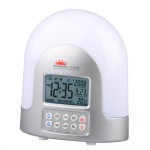 |
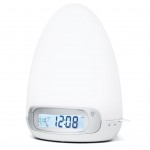 |
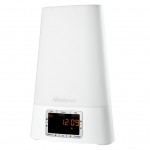 |
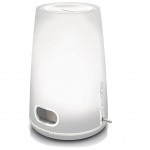 |
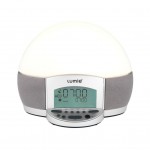 |
| Maxim LED Sunrise Alarm Clock
from £8.38 |
Muse ML-30 CR
from £39.26 |
Medisana Sunrise Wake Up Light Alarm Clockfrom
from £55.19 |
Philips HF3470 Wake Up Light Alarm Clock
from £90.00 |
Lumie Bodyclock ELITE 300
from £160.00 |
|
|
Note: this clock comes with a European plug, so you need a adapter to be able to plug it in. |
|
|
They all offer dawn simulation, so you need to check what additional features they provide – for example, how many sounds are available? The more expensive ones also offer radio; some offer iPod connectivity, which is good if you want to use your own sounds I guess (though I highly advise you set you phone to airplane mode or you’ll just disrupt your sleep as the phone tries to stay connected to the network sending and receiving information). You may also be concerned by the snooze function and how long it postpones, though you should not need it. Lastly, I think it’s interesting that the standard dawn simulation is over 30min, though Lumie have the option to set from 15min to over 90min, which I find is a nice feature though not essential when you are still in the process of finding out what works for you.
Waking up to light definitely makes it easier to start the day, but don’t expect to be jumping out of bed with pure joy – that would be expecting a little too much from this type of wake-up support.
I’ve talked about sleep and bed times before, but I’ll mention it again: if you don’t go to bed at a reasonable time, between 10-11pm, you can’t expect a sunrise alarm to save you at the other end of the night. We all need a certain amount of sleep, it varies slightly from person to person but the body needs enough time to go through physical and mental repair for us to be fully functioning during our waking hours. You should guard your sleep like you would guard your life because life is better when you are well rested and full of energy.
Using light therapy to deal with winter blues
In addition to getting up with a simulated sunrise you can use a light therapy lamp to help the body feel better during the short, dark winter days.
Light therapy has been shown to be highly effective in alleviating depression that is identified as being due to lack of light during the winter months.
A light therapy lamp can be used to counteract the following symptoms of winter depression:
• Fatigue
• Mood swings
• Listlessness
• Sleepiness
• Lack of concentration
• Lack of appetite
What time, frequency and duration of use do you need to consider to enjoy effective light therapy?
The most effective time of day to use the light therapy lamp is between 6am and 3pm. You can use the unit for up to 2 hours daily.
You can use the light therapy lamp as often as you like, I often have it on whilst working on the PC and when I feel I need a little bit more I just start the session off again. The treatment is most effective if you use it on at least five consecutive days, essentially you need to use it regularly to consistently get enough light to keep your mood and energy up.
The length of time you should use the light therapy lamp per session depends on how far you are away from it:
You can see in the table below how different the distance for each lamp is to get a full 10,000 LUX (the measuring unite for light strength). The closer the lamp has to be to get the highest LUX number the longer you have to use it when you can not guarantee to be that close to it for the whole duration of your light bath. It is interesting that a budget lamp is stated to have 10,000 LUX at 40cm whereas the mid-range price lamps have to be a lot closer to get the same light output.
The strongest light output per distance is given on the SAD Diamond model which states it can deliver 10,000 LUX at 61cm which would give you a lot more flexibility to do some work while sitting to have your light therapy.
My personal favourite is the budget model because it combines a good range with an excellent first-time buyer price.
Of course you may also want to consider the actual physical size of whichever lamp you will go for and whether it fits within where you are looking to use it.
I currently only have the Philips goLITE which gives off blue light, which seemed like a good product when I researched it many years ago. I have not included any blue light lamps in the table below because I am not 100% sure that just blue light is most effective. I think for the actual perceived feeling during the light therapy session a white light may be nicer. This article explains that blue light is always included in white spectrum light too, and marksdailyapple.com had an article about it last year if you’d like to look at the benefit of blue light.
Light Therapy lamps compared for every budget:
Dawn simulator and light therapy combination lamps
There are a few combination products that do both the dawn simulation/alarm clock function and the light therapy, although you’ll have to consider that it may not be practical to carry your alarm clock back and forth, to and from work, you may forget to pack it, etc. However, it might be helpful if you travel a lot and need to deal with jetlag and winter depression.
Overall, I think two separate lamps at budget prices for each of the two winter depression supports are a better idea – one sunrise alarm and one actual exclusive light therapy lamp – than a combination device.
Once you feel that light therapy and dawn simulation are effective for you, you can always invest in a better product in the future.
I’d love to hear from you, do you have a sunrise clock or a light therapy box already? Do you feel it makes a difference for you? If you are just about to invest in light therapy – let me know how you are getting on, which product you have chosen in the end, and why?
It would be great to update this article with your experiences, please drop me an email.
(Note all prices and links were accurate at time of creating this blog post, I do not have any affiliation with any of the brands mentioned/listed, I purely researched and listed what I found was most useful in my opinion at the time this was published)

